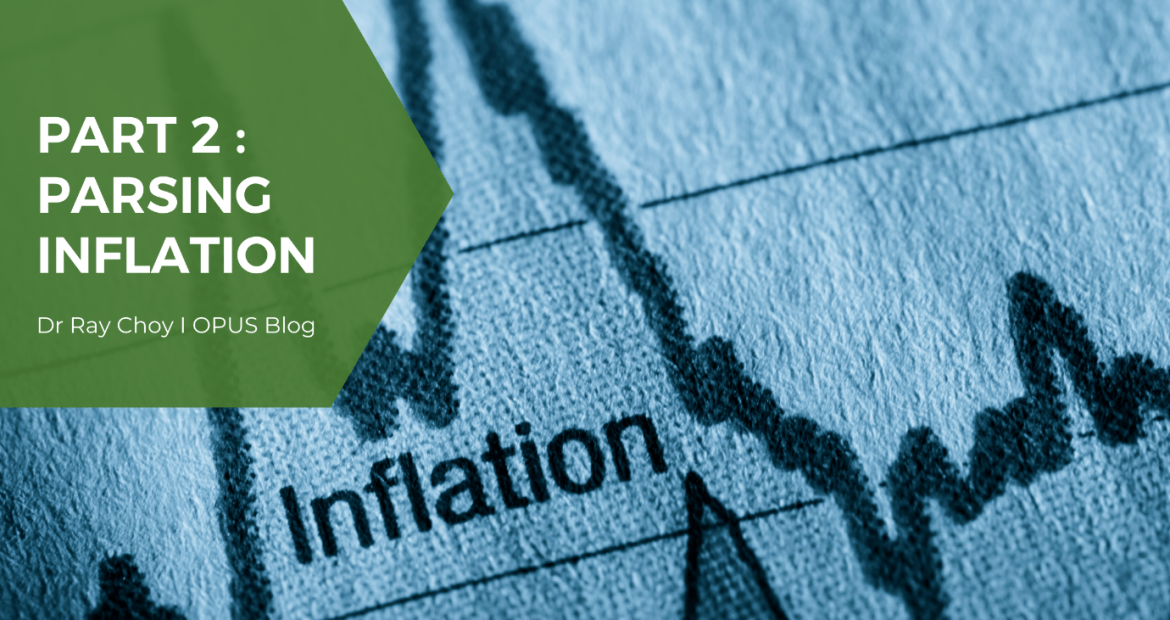By Dr Ray Choy, Head of Economics & Research
Cost-pushed versus demand-pulled inflation
The variations of inflation and whether it is cost-pushed or demand-pulled has important implications on monetary policy. Theoretically, demand-pulled inflation can be managed by monetary policy, since interest rates should have an impact on demand drivers such as credit growth. On the other hand, cost-pushed inflation such as one driven by higher commodity prices cannot be managed by interest rate policy. This is because interest rates alter the demand function in an economy, by either reducing or increasing credit growth and the cost of financing.
At present, the inflation caused by supply chain disruptions and high commodities prices are embedded within production systems rather than the price and supply of financing under a central bank’s purview. Therefore, when inflation is being driven by costs stemming from the supply-side, interest rate hikes are ineffective. Monetary policy under the control of the central bank, is not a policy tool for changing the supply structure of economies. However, the narrative of higher interest rates in the US has gained traction and therefore, it is worth examining the US situation since it leads monetary policy globally.
The US policy picture
The US has advanced monetary policy to asset purchase tapering and the futures market is pricing in the first interest rate hike by March-2022. The US has been clear on its policy intent since the window of opportunity for US policy normalization will (like inflation) be transient, as much of the gains in growth will occur during the initial phase of the economic re-opening where the pressure valve of pent-up demand is released and permeates the system.
Should this be the case, a potential bright spot for the financial markets is that the relatively higher intensity of interest rate rhetoric is likely to ease as we approach mid-2022, alongside a potential stabilisation of inflation.
For the US, the Federal Reserve’s rationale of monetary policy normalisation is backed by the expected acceleration in demand and inflation persisting above 2%. In other words, US inflation is a result of both cost-pushed (e.g. high commodity prices) and demand-pulled factors (e.g. rising GDP growth).
Over time, the degree of US policy aggression can be managed by the amount of asset tapering and its pace throughout 2022. This setting allows fine-tuning in policy adjustments and helps contain policy mistakes since the Federal Reserve (alongside most central banks) would rather remain accommodative than hamper the economic recovery.
Nuances at emerging economies and a flattening yield curve
As discussed in Part 1 of Parsing Inflation, in the case of ASEAN and some emerging market economies, inflation is not unusually high and in some cases, below long term trends, suggesting demand may not be the main driver of inflation, relative to the US case. Where inflation is primarily cost-pushed given limited demand-pulled pressures, raising interest rates too rapidly or in line with policy actions at the developed economies (e.g. the US) will be risky for the currently fragile economic recovery.
The bearish flattening of the yield curve (i.e. yields on short-dated bonds rises more or at a faster pace than long-dated bonds) already indicates that high growth and inflation is expected only for the short term, while longer term expectations could be potentially mediocre. This notion is supported since some regions, especially the developed economies, are experiencing inflation acceleration with high growth while others, especially the emerging economies including the ASEAN-5, are decelerating. Conventionally, such a bearish flattening in the yield curve, if it turns more severe, points toward market expectations of stagflation. At present, economic indicators do not suggest stagflation since economic activity is recovering rather than slowing and inflation is not unambiguously accelerating. Economic crises tend to manifest as cycles and having survived the trough, the global economy has progressed to the next phase, gaining significant traction with the recovery, even if it occurs at different speeds across the world.
At this point, it is worth emphasising that the inflation narrative on bond markets needs to be taken with a pinch of salt. In fact, much of the recent market volatility should be attributed to the change in yield differentials (rather than inflation) where emerging markets have been faced with capital outflows simply because developed markets’ yields have turned relatively more attractive (i.e. a reversal of the carry trade). Unfortunately, the increase in yields at developed markets can be said to have been more fundamentally driven by inflation and higher growth relative to the emerging markets. Hence, as collateral damage, emerging markets are absorbing the global market volatility caused by an inflation narrative that originates from the developed markets. This is sometimes a misunderstood and underrated insinuation since the causes of volatility are typically internalised to higher risk emerging markets.
Concluding thoughts
The evidence surrounding the trajectory and persistence of inflation is largely unsynchronised, pointing to continued market and economic uncertainty. Inflation is accelerating in the developed economies but decelerating in the emerging economies.
The trend of higher inflation cannot be presumed and inflation in commodities prices is not broad-based across all segments in energy, agriculture, and metals. Of note, the recent decline in China’s GDP growth and malaise in the property sector is impacting commodity prices, especially iron ore and steel. Energy prices, in particular oil, could have benefitted from seasonal and temporarily higher demand during the northern hemisphere’s cold weather period. However, this bull run in oil can be unpredictable since it is subject to OPEC narratives and geopolitics, amid the US’s capability to release oil inventories when required. In particular, the stalling of oil price (Brent benchmark) near the psychological level of $85 has been recently pressured by rising US oil stocks and overbought market conditions.
Market indicators such as TIPS suggest that medium term US inflation is likely to decelerate from current level and will remain below 2.5%. The present inflation narrative is omitting the likelihood of decompressed supply chains as productivity returns to pre-pandemic levels, not to mention productivity gains from supply chain evolution driven by innovation and new technologies following the pandemic.
Regardless if inflation remains persistent, transient or episodic, an emergent risk from the current crosswinds is developing economies’ central banks attempting to mimic advanced economies’ accommodative policy withdrawal, in order to pursue financial market and exchange rate stability. This leaves central banks in an unenviable position of having to balance inflation against risks to growth momentum during a period of economic fragility and uncertainty.
Disclaimer
The information, analysis and opinions expressed herein are for general information only and are not intended to provide specific advice or recommendations for any individual entity. Individual investors should contact their own licensed financial professional advisor to determine the most appropriate investment options. This material contains the opinions of the manager, based on assumptions or market conditions and such opinions are subject to change without notice. This material has been distributed for informational purposes only and should not be considered as investment advice or a recommendation of any particular security, strategy or investment product. Information provided herein may include data or opinion that has been obtained from, or is based on, sources believed to be reliable, but is not guaranteed as to the accuracy or completeness of the information. No part of this material may be reproduced in any form, or referred to in any other publication, without express written permission. Opus Asset Management Sdn Bhd and its employees accept no liability whatsoever with respect to the use of this material or its contents.





